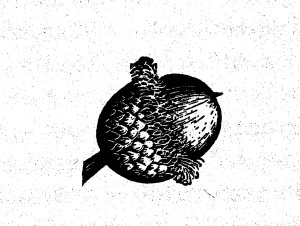“When the oak-tree is felled, the whole forest echoes with it; but a hundred acorns are planted silently by some unnoticed breeze.” Thomas Carlyle
That time of year is almost here. The first acorns are appearing on the ground. Soon unnoticed breezes will be planting acorns by the hundreds.
What is it about acorns? So much beauty and power in their origin, and in their future. And an under-stated elegance in their present. That little cap of theirs—seems as though it covers a little head full of thoughts of life, birth, and growth.
But acorns are also a food; an irreplaceable staple of woodland mammals—from squirrels and raccoons to deer and black bears. And pigs, taken to the forest to forage.
Where do they really come from anyway? If I think I have grasped their origin, then perhaps I have not yet comprehended my own ignorance; or my own origin. But greater ignorance it would be, not to be grateful—grateful for this astounding combination of beauty of form and functionality, the acorns that grace our landscape.
Thomas Carlyle (1795-1881) was a Scottish author and social critic, known among other things for his commentary on the industrial revolution.
Image credit: The acorn of a bur oak. Donald Peattie, naturalist, author, artist.
Originally posted at Bacon from Acorns






2 comments
John Cuddeback
Indeed Scot it is. Doesn’t one’s awareness of how the animals’ flourishing follows from the trees’ abundance lend much to our appreciation of our physical surroundings? –even when there is some inconvenience…
Scot F. Martin
In my front yard is the carnage of hundreds of half, quarterly, and mostly devoured shagbark hickory nuts. The indians and early settlers made flour from them.
In my backyard, shortly, will remain the prickly husks of American beech nuts after the grackles and squirrels have their gorging. The season for walking barefoot in the backyard will be over.
Life is a beautiful, glorious mess.
Comments are closed.